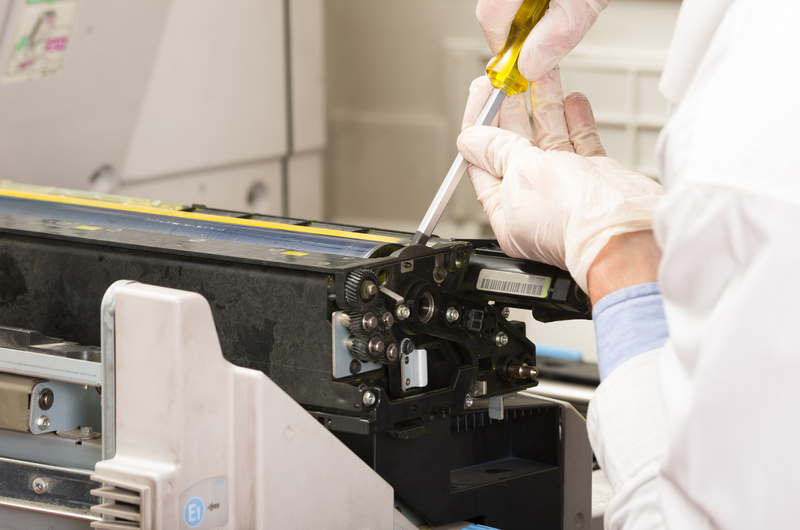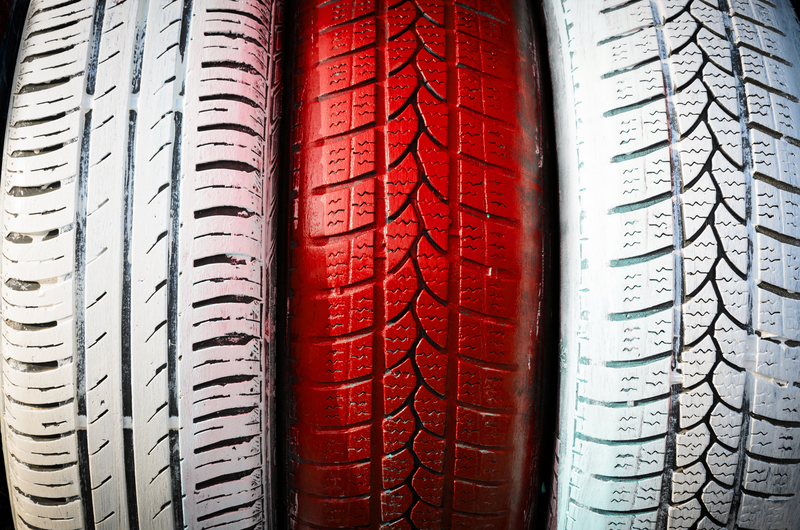How Your City is Handling Packaging and Cardboard Disposal Solutions
Packaging and cardboard waste have become increasingly prominent issues in the era of booming e-commerce, online shopping, and global logistics. If you look at your trash bin, chances are you'll notice an abundance of cardboard boxes and packaging materials. But have you ever wondered how your city manages this mounting pile of cardboard and packaging waste? In this in-depth article, we'll delve into the innovative ways that municipalities are addressing packaging and cardboard disposal solutions to build cleaner, more sustainable urban environments.

The Rising Challenge of Cardboard and Packaging Waste
The modern convenience of online shopping has, unfortunately, led to a sharp rise in cardboard and packaging waste production. From pizza boxes and electronics packaging to shipping cartons and retail displays, cardboard accounts for a significant chunk of urban solid waste. This surge in consumption is forcing cities to adopt smarter, greener methods of managing these essential materials. How are they doing it? And what can residents do to help?
The Environmental Impact of Cardboard and Packaging Materials
- Resource Consumption: Producing new cardboard requires large amounts of wood, energy, and water.
- Waste Volume: Cardboard can quickly fill up landfills, consuming valuable space and releasing methane as it decomposes in anaerobic conditions.
- Recyclability: While cardboard is highly recyclable, contamination and improper disposal can reduce its potential.
- Energy Savings: Recycling cardboard saves approximately 24% of the energy required to produce new material.
Cities everywhere are realizing the importance of managing cardboard and packaging waste both efficiently and sustainably. Let's take a closer look at the various cardboard disposal solutions being implemented at the municipal level.
City-Wide Cardboard and Packaging Disposal Initiatives
Urban waste management departments have been challenged to keep up with rapidly increasing volumes of packaging waste. Fortunately, many cities are proactively adopting packaging and cardboard recycling programs and embracing new technologies for a circular economy.
1. Curbside Cardboard Collection and Recycling
Many urban centers now operate dedicated curbside recycling programs for cardboard and other paper-based materials. Key features include:
- Single-stream recycling: Residents can place flattened cardboard in the same bin as mixed recyclables, simplifying disposal and increasing participation rates.
- Special cardboard pick-up days: Some municipalities schedule periodic bulk cardboard collection to manage spikes in waste, such as during holidays or moving seasons.
- Explicit guidelines: Cities provide clear instructions on how to prepare cardboard for collection--usually emphasizing flattening boxes and removing contaminants such as plastic tape and foam.
2. Drop-Off Recycling Centers
For residents and businesses generating large amounts of cardboard, many municipalities also operate recycling centers or depots. Benefits include:
- Accessibility: Locations throughout the city so residents don't have to travel far.
- Volume handling: Ability to accept significant quantities of flattened boxes and packaging materials.
- Education: On-site information about best practices for packaging and cardboard disposal.
3. Commercial Cardboard Collection Services
Businesses, restaurants, and retail establishments often produce far more cardboard waste than households. Cities frequently offer or mandate separate commercial cardboard collection systems designed for:
- High-volume containers: Large bins or compactors dedicated to cardboard and paperboard recyclables.
- Scheduled pickups: Regular pick-up on daily, weekly, or customized schedules to suit business needs.
- Fee structures: Incentives for businesses that reduce contamination or increase the volume of recyclable materials.
4. Bulk Waste Drop-Off Events
Some cities hold periodic "recycling days" or bulk drop-off events, encouraging residents to clear out large quantities of packaging and cardboard waste after holidays, community clean-up efforts, or local events.
Innovative Packaging and Cardboard Disposal Solutions
Forward-thinking cities are leveraging technology and public-private partnerships to improve the packaging and cardboard waste management process. Here are some of the latest trends:
Smart Recycling Bins and Sensors
IoT-enabled "smart bins" now track fill levels in real time and send alerts to collection services when bins need emptying. These bins, equipped with sensors, can:
- Reduce overflowing containers to prevent littering.
- Optimize collection routes for municipal fleets, cutting fuel use and emissions.
- Track contamination by monitoring materials placed in recycling bins.
Public Education and Outreach Campaigns
Ultimately, the success of any packaging and cardboard recycling program hinges on public participation. Cities are investing in dynamic education efforts, including:
- Online guides: Websites and mobile apps that explain how to recycle different types of packaging materials.
- Social media outreach: Regular reminders and "recycling challenges" to motivate residents to participate.
- School programs: Teaching children about environmental stewardship and encouraging them to practice responsible disposal at home.
Partnerships with Businesses and Retailers
Leading cities are increasingly partnering with retailers, processors, and logistics providers to reduce unnecessary packaging, promote reusable alternatives, and streamline the path from consumer to recycler.
- Take-back programs: Retailers collect used packaging from customers for recycling.
- Reusable packaging pilots: Pilot programs encourage or incentivize the use of returnable packaging solutions.
- Producer responsibility: Some localities mandate that manufacturers and retailers fund or participate in packaging waste programs, known as Extended Producer Responsibility (EPR).
Regulations and Standards Governing Cardboard and Packaging Disposal
Cities don't operate in a vacuum when developing cardboard and packaging waste solutions. Local efforts are often coordinated with state, provincial, and national regulations that dictate proper handling, recycling rates, and reporting.
Key Regulatory Mechanisms
- Mandatory Recycling Ordinances: Many cities require residents and businesses to separate cardboard and packaging from general waste.
- Landfill Bans: Some municipalities prohibit disposal of recyclable cardboard and other packaging materials in landfills.
- Material Recovery Rate Targets: Higher recycling targets help cities track progress and motivate continual improvement.
- Penalties for Non-Compliance: Fines for improper disposal or contamination of recyclables incentivize proper practices.
International Best Practices
Cities around the globe are learning from each other. For example, San Francisco and Toronto are lauded for high diversion rates and strict packaging regulations, while European capitals such as Amsterdam and Berlin are pioneering zero-waste cities through aggressive sorting, make-back-composting, and robust public-private recycling partnerships.
Best Practices for Residents: Doing Your Part
As a resident, you play a critical role in making your city's packaging and cardboard disposal solutions successful. Here are some practical tips to ensure that your efforts have maximum impact:
1. Flatten Boxes
- Why: Flattening boxes saves space, makes collection more efficient, and speeds up processing at recycling plants.
- How: Cut through tape and seams and break down boxes before placing them in recycling bins.
2. Remove Contaminants
- Why: Pizza grease, food residue, plastic liners, and packing peanuts can compromise the recyclability of cardboard packaging.
- How: Discard heavily soiled areas and remove non-paper materials prior to recycling.
3. Know Your City's Guidelines
- Why: Guidelines differ--some cities accept certain types of cardboard and packaging, while others do not.
- How: Check your municipal website or recycling calendar for specific instructions.
4. Encourage Local Retailers
- Why: Businesses respond to consumer demand for sustainable packaging.
- How: Support stores using eco-friendly or minimal packaging, and participate in take-back or reuse programs.
5. Reuse Before Recycling
- Why: Reusing boxes for crafts, storage, or shipping extends their life and reduces demand for new resources.
- How: Get creative--host a box swap with neighbors or find local businesses that can reuse your unwanted boxes.

Future Developments in Packaging and Cardboard Disposal
Cities are constantly searching for the next big solution in packaging and cardboard waste management. Here's what the future could hold:
Biodegradable and Compostable Packaging
The development of plant-based, easily compostable packaging materials could significantly reduce landfill waste and streamline organic recycling processes in urban centers. Some cities are already running pilot projects to collect these materials separately.
Automated Material Recovery Facilities (MRFs)
Advanced sorting technologies, including AI and robotics, will allow recycling centers to more efficiently separate cardboard and packaging types, reducing contamination and improving recovery rates.
Circular Economy Initiatives
The idea of a "closed-loop" economy--where materials such as packaging and cardboard are continually recycled into new products--is gaining traction. Cities at the forefront of this movement are investing in infrastructure and policy to make it a reality.
Conclusion: Your City's Commitment to Sustainable Packaging and Cardboard Disposal
There's no denying that packaging and cardboard waste pose substantial challenges for modern cities. But thanks to a combination of innovative technologies, proactive public policies, and strong community engagement, urban centers worldwide are making extraordinary progress.
By understanding how your city is handling packaging and cardboard disposal solutions--and by following local guidelines to reduce, reuse, and recycle--you can play a vital role in creating a cleaner, greener future. Stay informed, get involved, and let's make sustainable packaging success a hallmark of every community!